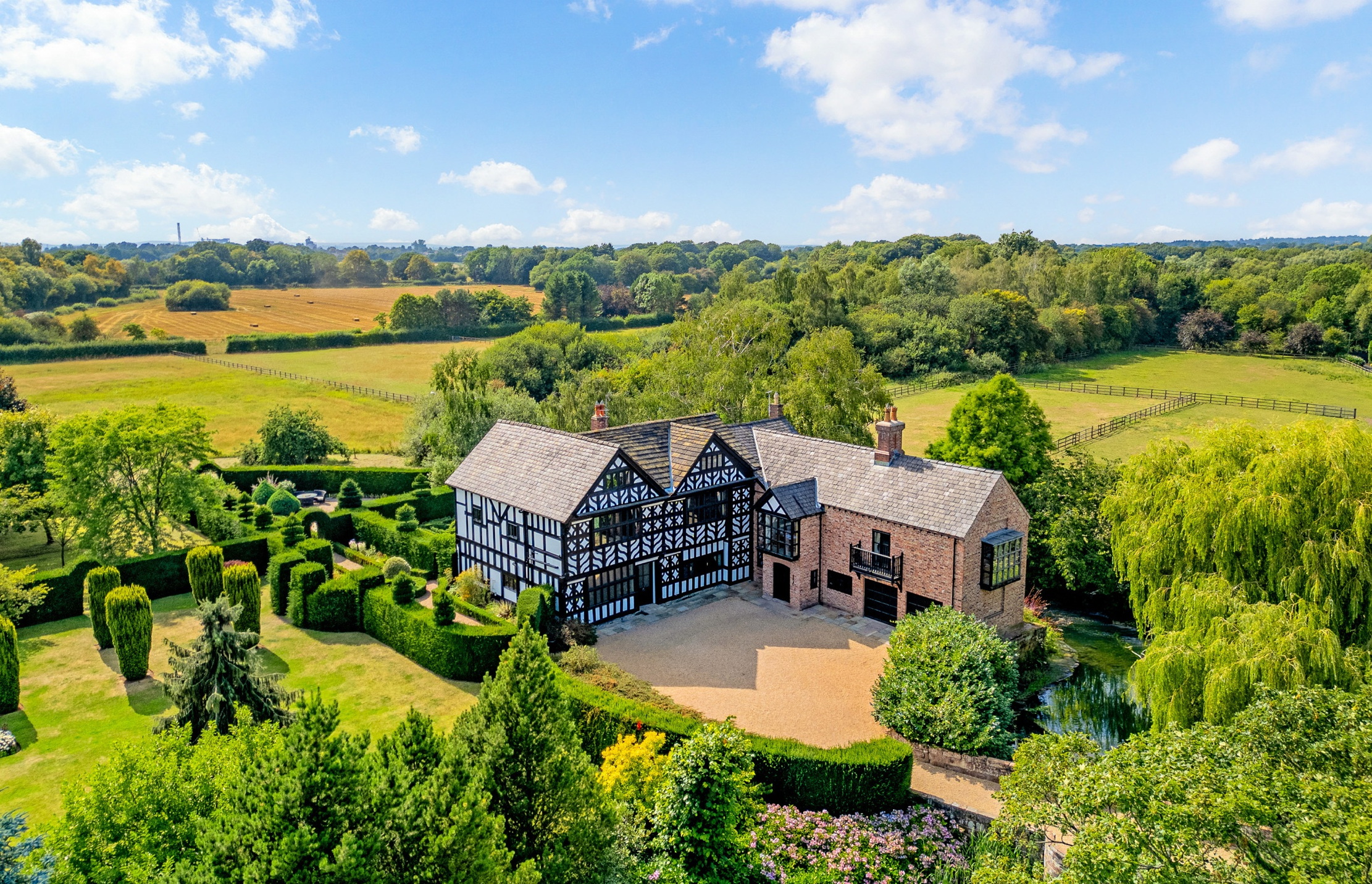Smart investments for 2010
Investing in alternative assets is more fun and less risky than stocks and bonds. Jonathan Self suggests woodland, textiles, coins and stamps


O gold! I still prefer thee unto paper,' declared Lord Byron, espousing an investment strategy that accords perfectly with my own. For, although the highest average long-term returns are to be had from the stockmarket and every financial adviser in the land would have you believe that my own approach is madness, I have always put my little all into tangible assets.
My portfolio of alternative investments-including property, art, antiques, wine and, of course, precious metals-has provided me with more than adequate gains over the past three decades. I've never had to worry about the state of the economy, financial scandals or market fluctuations either.
My net worth may rise or fall, but the intrinsic value of my assets remains constant, as they produce an income and/or give me pleasure regardless of their monetary value. (Indeed, I wouldn't be entirely sorry if the price of claret were to suffer an irreversible decline any time after, say, 2015, as it would give me an excuse to drink the three cases of Château Margaux '99 hidden away in the cellar.)
More than 800% gainin under 15 years
Since I began earning money, I've adopted the simplest of investment strategies. First, I paid off my mortgage, and then used my spare cash to buy property and to collect whatever took my fancy.
In the early years, I made some silly mistakes, but I also had some notable successes. In the late 1980s, for instance, I started buying Irish art, which shot up in value to such an extent that when I sold the majority of it at auction in the early Noughties, I had made more than 800% profit in under 15 years.
True, my investments are largely illiquid and none of them produces a dividend. On the other hand, by the time I retire, my rental income should be more than sufficient to meet living expenses and I will have a selection of other assets to sell, as and when additional capital is needed. Not just an investment, an interest
Exquisite houses, the beauty of Nature, and how to get the most from your life, straight to your inbox.
The received wisdom is never to invest more than 10% of your total wealth in alternative investments, but a more sensible approach might be to set your financial objectives and then decide in what way non-traditional investments may meet your needs.
Another popular myth is that you should only buy what you like. Although this is wise, it isn't always applicable. You should choose subjects in which you have a natural interest, and don't stint on your research. Read extensively, go to lectures, talk with experts, attend sales and, above all, be prepared to wait for the right deal before you start buying.
Buy the best you can afford
Interestingly, prices for the most desirable alternative investments have remained buoyant despite the recession, which supports the view that one should always purchase the best examples one can afford.
Baron Nathan Rothschild believed that ‘the time to buy is when blood is running in the streets', and although things aren't quite that bad, the present downturn has opened up some wonderful opportunities, with overall asset prices down by between 20% and 40% compared to 2008. Is there any asset class that should be avoided? Billy Rose, the songwriter, opined that you should ‘never invest in anything that eats', but otherwise it's an open field. Here are my current favourites.
Woodland: a growing investment
‘The woodlands market,' according to Angus Hanton, general manager of Woodland Investment Management, ‘has surprised everyone by being so robust, with prices actually going up a bit over the past 12 months. This is because it's seen as a safe place to put money, a hedge against inflation and a way of avoiding Inheritance Tax.'
The tax benefits of owning woodland are considerable, as it's Inheritance Tax-free after two years of ownership, there is no tax on the sale of timber and it's possible to minimise any Capital Gains Tax liability.
Prices range from £3,000 to £10,000
an acre and may include sporting rights, which can produce useful additional income. Although woods are available from £15,000 upwards, a typical example from Mr Hanton's books is the 16-acre Adze Wood in Kent, which hasn't been harvested for at least eight years, priced at £85,000.
Making material profits from rare textiles
Antique textiles, described by the Financial Times as ‘a collecting field waiting to happen', embraces any manmade material, from a 3,500-year-old sheet of Royal Egyptian linen to a 20th-century tapestry, taking in medieval wall hangings and 19th-century Irish lace along the way.
A leading dealer, Meg Andrews, formerly of Sotheby's, says that the recession has had ‘little effect on prices for the best pieces', but that demand for more modestly priced textiles ‘has slowed, making it a good time to buy'. It's possible to start a collection with a few hundred pounds, and a few thousand pounds buys something outstanding. Miss Andrews, for example, is selling a framed Morris & Co piece in an original frame for £1,800 that ‘is very beautiful and will increase in value'.
She feels 20th-century British-printed textiles offer great investment potential, and that rare Kashmir and Paisley shawls and children's costumes will undergo dramatic price increases in the future.
Coining it
‘Every coin tells a story,' says William Mac-Kay of Spink, the specialist dealer and auction house that's been advising clients (some of them royal) since 1666, ‘and is a direct link with history, not to mention a work of art.'
The firm is interested in attracting collectors, not investors, although, slightly reluctantly, Mr MacKay concedes that ‘since 2000, the value of top-grade and rare English coins has trebled'.
Peter Temple, author of The Handbook of Alternative Assets (to be published by Harriman House in March), began buying Anglo-Saxon silver pennies and other English coins for investment purposes in 2004, but admits that ‘collecting has since become more of a passion than a passive investment'. His collection has shown returns in the region of 10% a year. Mr Temple notes with enthusiasm that ‘better-quality, investment-grade coins are very much in demand'.
Returns that can't be licked
Quietly, as befits such a sedentary pursuit, philately has emerged as one of the hottest and most fashionable pastimes in the world. Postage stamps are the third-largest category traded on eBay and it's estimated that more than 30 million people now count themselves as active collectors.
Much more to the point, stamps have proved to be an excellent medium- to long-term investment. Louise Reynolds, from Stanley Gibbons, points out that, in 2008, although stock prices crashed, the GB30 Rare Stamp Index increased by 38.6%, and over the past 50 years, stamps have shown average annual returns of 9.8%.
Stanley Gibbons, which was founded in 1856, has done much to encourage investors. Geoff Anandappa, its Investment Portfolio Manager, deals with clients who aren't collectors and ‘puts together portfolios of rare stamps based on their requirements'. The company offers guaranteed minimum returns of 5% a year, but, explains Mr Anandappa, ‘returns should be much higher'.
He cites a Hong Kong client who invested £23,100 in 2008 and enjoyed a 15.8% increase in the following 12 months-further proof that, when it comes to investment, it always pays to think of the alternative.
Contacts
Woodland
Woodland Investment Management 020-7737 0070; www.woodlands.co.uk
Savills 020-7499 8644; www.savills.co.uk
Textiles
Meg Andrews, antique costumes and textiles 020-7359 7678; www.meg-andrews.com
Kerry Taylor Auctions 020-8676 4600; www.kerrytaylorauctions.com
The Textile Society Manchester Antique Textile Fair,
Sunday, March 7 London Antique Textile Fair,
Sunday, September 26 020-7359 7678; www.textilesociety.org.uk
Coins
Spink 020-7563 4000; www.spink.com
Stamps
Stanley Gibbons 020-7836 8444; www.stanleygibbons.com
Further reading
The Handbook of Alternative Assets by Peter Temple
Published by Harriman House in March
Guide to Film Investment
Published free by Pilot Cottage (www.pilotcottage.co.uk)
* For more investment stories like this every week, subscribe and save
Country Life is unlike any other magazine: the only glossy weekly on the newsstand and the only magazine that has been guest-edited by His Majesty The King not once, but twice. It is a celebration of modern rural life and all its diverse joys and pleasures — that was first published in Queen Victoria's Diamond Jubilee year. Our eclectic mixture of witty and informative content — from the most up-to-date property news and commentary and a coveted glimpse inside some of the UK's best houses and gardens, to gardening, the arts and interior design, written by experts in their field — still cannot be found in print or online, anywhere else.


